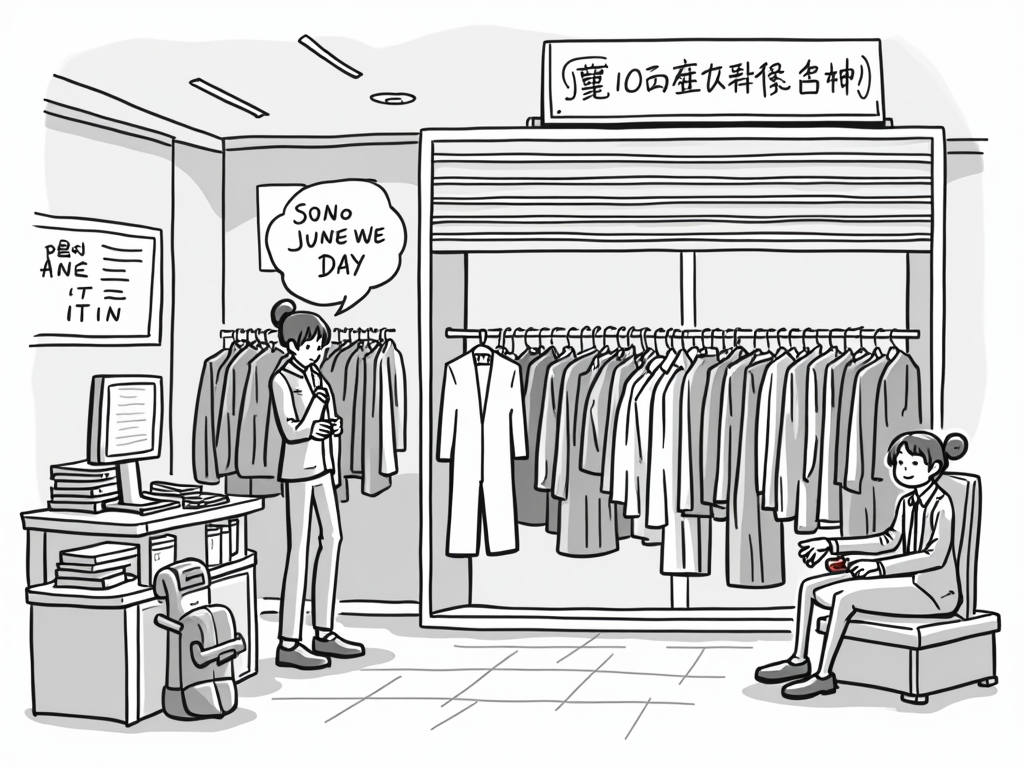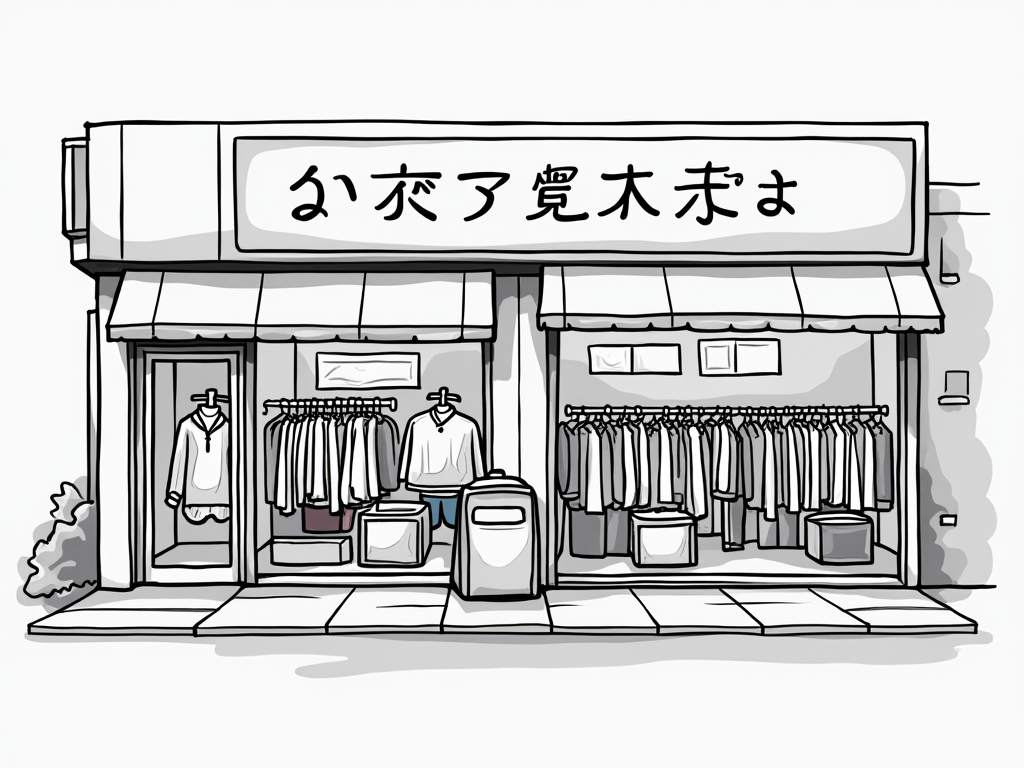
How to Start a Second-Hand Clothing Business in Dubai: A Comprehensive Guide
Table of Contents
- Introduction
- Understanding the Dubai Market
- Legal Requirements and Licensing
- Choosing Your Business Model
- Sourcing Inventory
- Setting Up Your Store
- Pricing Strategies
- Marketing and Promotion
- Managing Finances
- Expanding Your Business
- Challenges and Solutions
- Conclusion
- FAQs
1. Introduction
Starting a second-hand clothing business in Dubai can be an exciting and profitable venture. With the growing trend of sustainable fashion and the increasing demand for affordable, high-quality clothing, the second-hand market in Dubai presents a unique opportunity for entrepreneurs. This comprehensive guide will walk you through the essential steps to establish and grow your second-hand clothing business in one of the world’s most dynamic cities.
Dubai, known for its luxury shopping and high-end fashion, might seem like an unlikely place for a second-hand clothing business. However, the city’s diverse population, consisting of both locals and expatriates, creates a perfect environment for this niche market. Whether you’re targeting budget-conscious shoppers, vintage enthusiasts, or environmentally conscious consumers, there’s a place for your second-hand clothing business in Dubai’s retail landscape.
2. Understanding the Dubai Market
Before diving into the intricacies of starting your business, it’s crucial to understand the Dubai market. The city’s retail sector is highly competitive, but it also offers unique advantages for second-hand clothing businesses:
- Diverse customer base: Dubai’s population includes people from various nationalities and income levels, providing a wide range of potential customers.
- Growing sustainability awareness: There’s an increasing focus on sustainable fashion and circular economy principles in Dubai.
- High turnover of residents: The transient nature of Dubai’s expat population means there’s a constant influx and outflow of clothing.
- Tourism industry: Dubai attracts millions of tourists annually, many of whom are interested in unique shopping experiences.
To succeed in this market, you’ll need to identify your target audience and tailor your offerings accordingly. Consider factors such as age groups, income levels, and fashion preferences when defining your niche within the second-hand clothing market.
3. Legal Requirements and Licensing
Starting a business in Dubai requires navigating various legal requirements and obtaining the necessary licenses. Here’s a step-by-step guide to help you through this process:
3.1. Choose Your Business Structure
Decide on the most suitable business structure for your second-hand clothing business. Options include:
- Sole Proprietorship
- Limited Liability Company (LLC)
- Free Zone Company
Each structure has its advantages and limitations. Consider factors such as ownership restrictions, capital requirements, and tax implications when making your decision.
3.2. Obtain Necessary Licenses
To operate legally in Dubai, you’ll need to obtain the following licenses and permits:
- Trade License: Issued by the Department of Economic Development (DED) or relevant free zone authority.
- Commercial License: Required for retail activities.
- Import/Export License: If you plan to import second-hand clothing from abroad.
- Municipality License: For your physical store location.
Ensure that you comply with all regulations and maintain proper documentation throughout the licensing process.
4. Choosing Your Business Model
There are several business models to consider when starting a second-hand clothing business in Dubai:
4.1. Brick-and-Mortar Store
A physical store offers customers the opportunity to browse and try on clothing. Consider factors such as location, foot traffic, and rental costs when choosing a storefront. Popular areas for second-hand clothing stores in Dubai include Karama, Deira, and Bur Dubai.
4.2. Online Marketplace
An e-commerce platform allows you to reach a wider audience and operate with lower overhead costs. Platforms like Shopify, WooCommerce, or custom-built websites can help you establish your online presence.
4.3. Consignment Shop
In this model, you sell items on behalf of consignors, taking a percentage of the sale price. This approach can help you maintain a diverse inventory without significant upfront costs.
4.4. Pop-Up Shops or Markets
Temporary retail spaces or market stalls can be an excellent way to test the market and build brand awareness before committing to a permanent location.
5. Sourcing Inventory
The success of your second-hand clothing business largely depends on the quality and variety of your inventory. Here are some strategies for sourcing second-hand clothing in Dubai:
5.1. Local Suppliers
Build relationships with local suppliers who specialize in second-hand clothing. These may include:
- Clothing recyclers
- Thrift stores looking to offload excess inventory
- Estate sales and auctions
- Individual sellers or families
5.2. International Suppliers
Consider importing second-hand clothing from countries with established second-hand markets, such as the United States, United Kingdom, or Japan. Be sure to comply with all import regulations and quality standards.
5.3. Community Donations
Organize clothing drives or partner with local charities to collect donations. This approach can help you source inventory while also contributing to the community.
5.4. Online Wholesale Platforms
Explore online platforms that specialize in wholesale second-hand clothing, such as Wholesale Central or Global Sources.
6. Setting Up Your Store
Whether you’re opening a physical store or an online marketplace, creating an inviting and organized space is crucial for attracting and retaining customers.
6.1. Physical Store Setup
For a brick-and-mortar store, consider the following:
- Store layout: Create an efficient flow that encourages browsing and maximizes space.
- Fitting rooms: Provide comfortable and well-lit fitting areas.
- Display fixtures: Invest in quality racks, hangers, and mannequins to showcase your inventory.
- Point of Sale (POS) system: Choose a reliable POS system for smooth transactions and inventory management.
- Lighting: Use appropriate lighting to highlight your merchandise and create a welcoming atmosphere.
6.2. Online Store Setup
For an e-commerce platform, focus on:
- User-friendly website design: Ensure easy navigation and mobile responsiveness.
- High-quality product photos: Invest in good photography to showcase your items accurately.
- Detailed product descriptions: Provide comprehensive information about each item, including size, condition, and brand.
- Secure payment gateway: Implement trusted payment options for customer convenience and security.
- Efficient shipping and returns process: Develop clear policies and procedures for order fulfillment and returns.
7. Pricing Strategies
Developing an effective pricing strategy is crucial for the success of your second-hand clothing business in Dubai. Consider the following factors when setting your prices:
7.1. Cost-Based Pricing
Calculate your costs, including inventory acquisition, overheads, and desired profit margin, to determine a base price for each item.
7.2. Market-Based Pricing
Research competitor prices and adjust your pricing to remain competitive while still offering value to customers.
7.3. Value-Based Pricing
Consider the perceived value of each item, especially for designer or vintage pieces, and price accordingly.
7.4. Dynamic Pricing
Implement a flexible pricing strategy that allows for discounts on slow-moving items or premium pricing for high-demand pieces.
8. Marketing and Promotion
Effective marketing is essential to attract customers and build brand awareness for your second-hand clothing business in Dubai. Consider the following strategies:
8.1. Social Media Marketing
Leverage platforms like Instagram, Facebook, and TikTok to showcase your inventory, share styling tips, and engage with your audience. Use hashtags relevant to second-hand fashion and Dubai’s retail scene to increase visibility.
8.2. Influencer Partnerships
Collaborate with local fashion influencers and bloggers to promote your store and reach a wider audience. Consider offering them exclusive discounts or first pick of new arrivals in exchange for promotion.
8.3. Local Events and Pop-Ups
Participate in local markets, fashion events, or organize your own pop-up shops to increase brand visibility and attract new customers.
8.4. Email Marketing
Build an email list of customers and send regular newsletters featuring new arrivals, promotions, and styling inspiration.
8.5. SEO and Content Marketing
Optimize your website for search engines and create valuable content such as blog posts on sustainable fashion, styling tips, and the benefits of second-hand shopping.
9. Managing Finances
Proper financial management is crucial for the long-term success of your second-hand clothing business in Dubai. Consider the following aspects:
9.1. Accounting and Bookkeeping
Maintain accurate records of all financial transactions, including sales, expenses, and inventory costs. Consider using accounting software or hiring a professional accountant to ensure compliance with local regulations.
9.2. Cash Flow Management
Monitor your cash flow closely and maintain a reserve to cover unexpected expenses or slow periods. Implement strategies to optimize cash flow, such as offering discounts for early payment or negotiating favorable terms with suppliers.
9.3. Budgeting and Forecasting
Develop a realistic budget and regularly review and adjust it based on your business performance. Create financial projections to guide your decision-making and growth strategies.
9.4. Taxation
Familiarize yourself with Dubai’s tax regulations and ensure compliance with all applicable taxes, including VAT if your business meets the registration threshold.
10. Expanding Your Business
As your second-hand clothing business grows, consider these expansion strategies:
10.1. Multiple Locations
Open additional physical stores in different areas of Dubai or other emirates to reach new customer bases.
10.2. Diversify Your Offerings
Expand your inventory to include accessories, shoes, or home goods to attract a wider range of customers.
10.3. Franchise Opportunities
Consider franchising your business model to facilitate rapid expansion across the UAE or internationally.
10.4. E-commerce Expansion
If you started with a physical store, consider launching an online platform to reach customers beyond your local area.
11. Challenges and Solutions
Starting a second-hand clothing business in Dubai comes with its unique set of challenges. Here are some common issues and potential solutions:
11.1. Cultural Sensitivities
Challenge: Some customers may have reservations about wearing pre-owned clothing due to cultural or personal preferences.
Solution: Educate customers about your thorough cleaning and quality control processes. Emphasize the sustainability and value aspects of second-hand shopping.
11.2. Competition from Fast Fashion
Challenge: Dubai’s numerous malls and fast fashion retailers can pose stiff competition.
Solution: Differentiate your business by offering unique, high-quality pieces and excellent customer service. Focus on the sustainability angle of second-hand shopping.
11.3. Inventory Management
Challenge: Maintaining a diverse and appealing inventory can be challenging, especially with one-of-a-kind items.
Solution: Implement a robust inventory management system and develop relationships with reliable suppliers. Consider consignment options to diversify your inventory without significant upfront costs.
11.4. Seasonality
Challenge: Dubai’s hot climate can affect clothing demand throughout the year.
Solution: Adjust your inventory according to seasonal trends and consider stocking items that cater to tourists or indoor activities during the hotter months.
12. Conclusion
Starting a second-hand clothing business in Dubai offers a unique opportunity to tap into the growing market for sustainable and affordable fashion. By understanding the local market, complying with legal requirements, choosing the right business model, and implementing effective marketing and financial strategies, you can establish a successful and profitable venture.
Remember that success in this industry requires patience, adaptability, and a keen eye for fashion trends. Stay committed to providing high-quality, curated second-hand clothing, and focus on building strong relationships with your customers and suppliers. With dedication and the right approach, your second-hand clothing business can thrive in Dubai’s dynamic retail landscape.
FAQs
Q1: Is it legal to sell second-hand clothing in Dubai?
A1: Yes, it is legal to sell second-hand clothing in Dubai. However, you must obtain the necessary licenses and permits, including a trade license from the Department of Economic Development (DED) or relevant free zone authority.
Q2: How much capital do I need to start a second-hand clothing business in Dubai?
A2: The required capital can vary significantly depending on factors such as your business model, location, and inventory size. A small brick-and-mortar store might require an initial investment of AED 100,000 to AED 300,000, while an online-only business could start with less.
Q3: Can I import second-hand clothing from other countries to sell in Dubai?
A3: Yes, you can import second-hand clothing from other countries. However, you’ll need to obtain an import/export license and comply with all relevant customs regulations and quality standards.
Q4: How can I ensure the quality of the second-hand clothing I sell?
A4: Implement a thorough quality control process, including careful inspection, cleaning, and repair of items before putting them up for sale. Develop clear standards for accepting items and train your staff to identify and reject subpar pieces.
Q5: What are some effective marketing strategies for a second-hand clothing business in Dubai?
A5: Effective marketing strategies include leveraging social media platforms, collaborating with local influencers, participating in local events and markets, implementing email marketing campaigns, and optimizing your website for search engines. Focus on highlighting the unique aspects of your inventory and the benefits of second-hand shopping.

Article reviewed by Beatriz Santos, Family Office Director | Aligning Wealth with Values, on April 22, 2025


